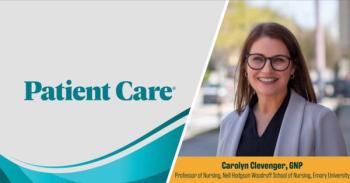
Type 1 Diabetes in Older Adults Nearly Tripled in 3 Decades, According to New Data
Global prevalence of adults 65 years and older with T1D increased 180% in the past 30 years, researchers reported.
Global prevalence of adults 65 years and older with
After age standardization, the global prevalence of T1D for adults 65 years and older still increased 28% over the last 3 decades, rising from 400 per 100 000 population in 1990 to 514 per 100 000 population, with an average annual increase of 0.86% (95% CI 0.79-0.93).
The results likely reflect a growing number of patients with T1D living to an elderly age, researchers reported, and that T1D “is no longer a contributory factor in decreased life expectancy owing to improvements in medical care over the three decades,” corresponding author Yongze Li, MD, PhD, of First Hospital of China Medical University in Shenyang, and colleagues wrote. “The findings are important for health practice and future research, and provide optimistic evidence for all people with [T1D], especially those with a diagnosis at a young age.”
Despite the negative impact of T1D on
Researchers assessed the data at a global, regional, and national level by age, sex, and sociodemographic index (SDI). The primary outcomes were T1D-related age standardized prevalence, mortality, DALYs, and mean annual percentage change, according to the study.
Findings
Although the results showed that the global age-standardized prevalence of T1D increased 180% between 1990 and 2019 among adults 65 years and older, investigators observed that mortality rates decreased 25% during the same period, going from 4.74 per 100 000 population in 1990 to 3.54 per 100,000 population in 2019. Moreover, mortality rates decreased 13-times faster in countries with a high SDI compared to those with a low-middle SDI (−2.17% per year vs −0.16% per year), indicating that global inequalities are still prevalent in diabetes care.
According to the study, the age standardized DALYs decreased from 113 (95% UI 89-137) per 100 000 population in 1990 to 103 (85 to 127) per 100 000 population in 2019, with an average annual trend of −0.33% (95% CI −0.41% to −0.25%). The most significant decrease was observed among those less than 79-years-old:
- 65-69 years: −0.44% per year (95% CI −0.53% to −0.34%)
- 70-74 years: −0.34% per year (95% CI −0.41% to −0.27%)
- 75-79 years: −0.42% per year (95% CI −0.58% to −0.26%)
In addition, researchers reported that an elevated fasting plasma glucose level remained the highest risk factor for DALYs among older adults, “indicating that blood glucose control is still suboptimal and a challenge among this population.”
“Our study extended the current understanding of the increasing global burden of T1DM by focusing on trends in older people (≥65 years) with T1DM,” Li et al wrote. “Our study also advocates for urgent attention to coping strategies for ageing populations and older people with T1DM, rational allocation of health resources, and the provision of targeted guidelines.”
Reference: Yang K, Yang X, Jin C, et al.
Newsletter
Enhance your clinical practice with the Patient Care newsletter, offering the latest evidence-based guidelines, diagnostic insights, and treatment strategies for primary care physicians.

















































































































































































































































































